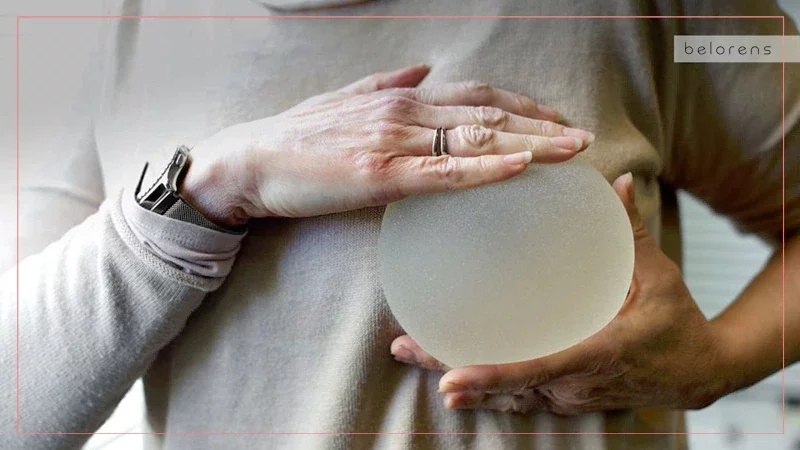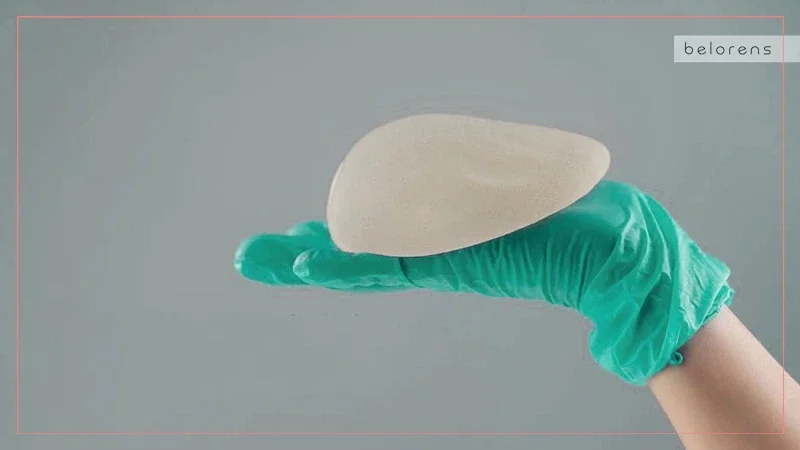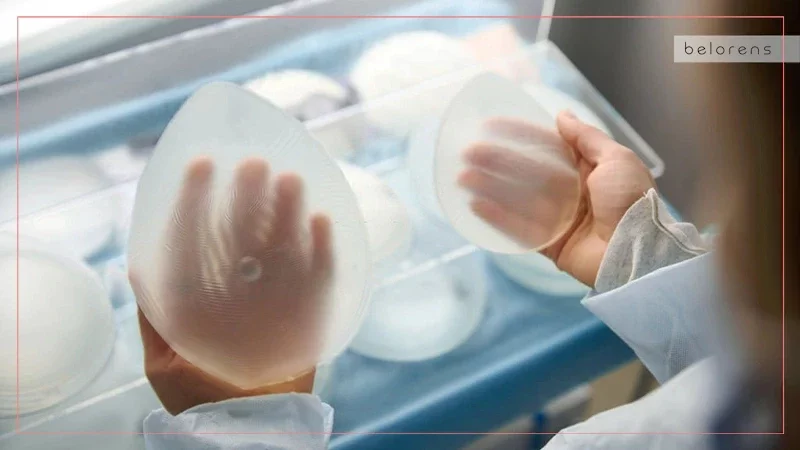Published on 25 Feb 2024
Breast Implants Shapes and Profiles
- ByMedical Content Team
- Medically Reviewed byDr. Sabine Kulhanek
Fact checked

Breast augmentation has become increasingly popular in recent years, with many women seeking to enhance their curves and boost their self-confidence. One crucial factor to consider when contemplating breast implants is the shape. While size often steals the spotlight, implant shape plays a significant role in achieving natural-looking results and meeting individual aesthetic goals.
Understanding the Basics
Breast implant shapes can broadly be categorized into two main types: round and anatomical (also known as teardrop or contoured). Each offers distinct advantages depending on personal preferences and desired outcomes.
Round Implants

Round implants are perhaps the most common choice among patients due to their versatility. As the name suggests, they maintain a consistent circular shape, providing fullness across both upper and lower poles of the breasts. This uniform distribution creates a more augmented appearance that some individuals find appealing for achieving enhanced cleavage.
With round implants, there is no concern about rotation since they maintain symmetrical proportions regardless of positioning within the breast pocket. Moreover, if any rotation does occur post-surgery, it typically goes unnoticed given their symmetric nature.
Teardrop Implants

Teardrop or anatomical implants mimic the natural contours of breasts more closely than round ones. Designed to resemble a teardrop shape with greater projection at the bottom, these implants offer a realistic look by mimicking natural breast tissue distribution.
The unique design allows anatomical implants to provide an increased volume at the lower pole while maintaining less fullness in upper areas compared to round counterparts. This feature makes them an excellent choice for those aiming for subtle enhancement or reconstruction after mastectomy.
However, one potential drawback is that anatomical implants require precise placement during surgery since any rotation may result in noticeable asymmetry. To mitigate this risk, surgeons employ textured surfaces or use specific techniques to ensure proper fixation within breast tissue pockets.
Also Read: 4 Types of Breast Implant Surgery Incisions: Which Technique is Right for Me?
Breast Implant ‘Profiles’
When considering breast implants, one crucial aspect to ponder is the implant profile. While size and shape often take center stage, choosing the right profile can significantly impact the final outcome and achieve desired aesthetic goals.
Breast implant profiles refer to how much an implant projects forward from the chest wall when viewed from the side. This projection determines how prominent or subtle the augmented breasts will appear after surgery. There are generally three main types of breast implant profiles: low, moderate, and high.
Low Profile Implants
Low-profile implants have a wider base width relative to their height, resulting in less forward projection compared to other profiles. These implants create a more subtle look by distributing volume across a larger area of the chest wall. They are suitable for individuals seeking a modest increase in breast size while maintaining natural proportions.
Low-profile implants work well for those with broader chests or who desire a gentle enhancement without excessive projection. Additionally, they may be recommended for patients with limited tissue elasticity or those aiming for conservative outcomes.
Moderate Profile Implants

Moderate-profile implants strike a balance between low and high profiles in terms of both projection and base width ratio. This profile option provides an intermediate level of fullness while still achieving natural-looking results.
With moderate-profile implants, individuals can enjoy slightly more noticeable augmentation than low-profile options without venturing into dramatic territory. This versatility makes them suitable for various body types as they complement different chest widths effectively.
High Profile Implants
High-profile implants offer increased forward projection compared to both low- and moderate-profile counterparts due to their narrower base width relative to height ratio. As such, these implants provide greater upper pole fullness and create more pronounced cleavage.
This profile is ideal for individuals looking for a more dramatic and noticeable augmentation or for those with narrower chests who desire increased projection. High-profile implants can deliver a rounder and fuller appearance, particularly in the upper part of the breasts.
Choosing Your Ideal Shape and Profile
Selecting the right breast implant shape and profile requires careful consideration of various factors, including body proportions, personal preferences, and desired outcomes. It's crucial to consult with a board-certified plastic surgeon who can guide you through the decision-making process based on your individual anatomy and aesthetic goals.
Factors Influencing Implant Shape Selection

1. Body Type: Each person has unique body proportions, such as chest width, shoulder slope, and existing breast tissue. Round implants often suit individuals with wider chests seeking enhanced fullness all around. On the other hand, teardrop implants tend to complement narrower frames more effectively by providing projection where needed most.
Consideration of individual body proportions also plays a vital role in determining which implant profile will best harmonize with your existing physique. For instance, individuals with wider chests may benefit from low-profile implants that distribute volume across a larger area without excessive projection.
Also Read: Understanding Body Types: Find Yours Based on Digestion and Shape
2. Desired Look: The desired outcome plays a pivotal role in determining which implant shape is best suited for an individual. If one seeks a more dramatic augmentation or wishes to emphasize cleavage significantly, round implants may be preferable due to their ability to provide fuller upper pole volume. Conversely, those aiming for a subtler enhancement or natural-looking results may opt for anatomical implants' teardrop-like contouring effects.
Furthermore, If you seek a subtle enhancement while maintaining natural-looking results, moderate-profile implants might be suitable. On the other hand, high-profile implants are ideal for those looking for more dramatic fullness or enhanced cleavage.
3. Lifestyle Considerations: Lifestyle choices should also factor into the decision-making process when choosing implant shape. For instance, individuals participating in high-impact activities might prefer round implants since they are less prone to rotation or distortion during physical exertion.
Lifestyle choices should also influence your decision-making process regarding implant profiles. Active individuals engaged in sports or physical activities may prefer low- or moderate-profile options since they offer less risk of interference during movement compared to high profiles.
4. Surgeon Recommendation: Ultimately, relying on the expertise of a skilled plastic surgeon is essential when making this important decision regarding implant shape and profile selection. Surgeons possess comprehensive knowledge about each option's pros and cons while considering your specific needs and expectations.
Conclusion
Breast implant shapes and profiles offer patients diverse possibilities when it comes to achieving their ideal look through augmentation surgery or reconstruction after mastectomy procedures. The choice between round and teardrop implants as well as low, moderate, and high-profile implants depends on personal preferences, desired outcomes, and individual anatomy.
Round implants provide versatility with their symmetrical shape and consistent fullness across both upper and lower poles of the breasts. They are popular among those aiming for enhanced cleavage or a more augmented look.
Teardrop implants mimic natural breast contours more closely, offering a realistic appearance by providing increased volume at the lower pole while maintaining less fullness in the upper areas. This shape is ideal for those seeking subtle enhancement or reconstruction after mastectomy.
When choosing an implant shape and profile, factors such as body type, desired look, lifestyle considerations, and surgeon recommendation should all be taken into account. Consulting with a skilled plastic surgeon who can guide you through this decision-making process based on your unique needs is crucial.
Ultimately, selecting the right breast implant shape and profile contributes significantly to achieving natural-looking results that align with individual aesthetic goals. By understanding the basics and considering various factors influencing shape selection, individuals can make informed decisions that result in satisfying outcomes from their breast augmentation journey.




